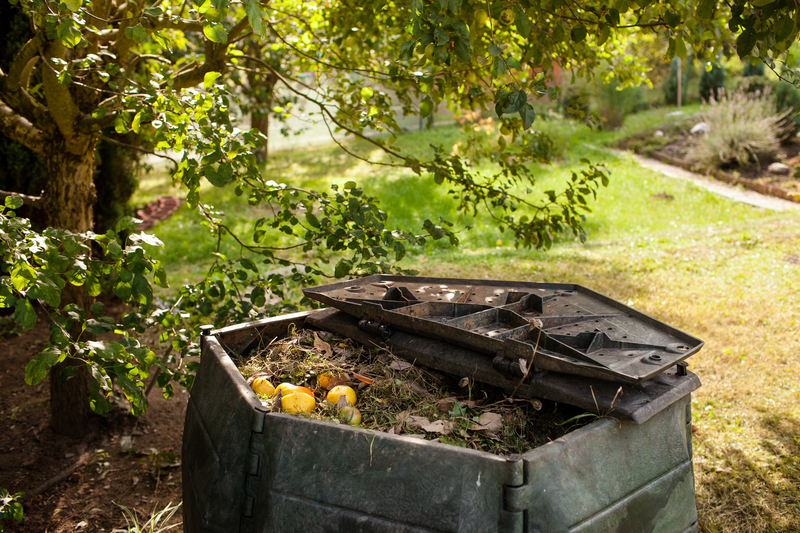Creating a Zero-Waste Office: Strategies for Success
As businesses set their sights on sustainability, the concept of a zero-waste office is gaining unprecedented traction. Organizations are realizing not only the ecological benefits but also the cost efficiency, enhanced brand reputation, and improved employee morale associated with the zero-waste movement.
In this comprehensive guide, we'll explore actionable and proven strategies to help you transform your workspace into a responsible, eco-friendly environment. From waste audits to sustainable procurement and staff engagement, this article covers every step on the journey to a zero-waste office.
Understanding the Zero-Waste Philosophy
A zero-waste office is an ambitious yet achievable goal. By definition, a zero-waste environment strives to send no waste to landfill or incineration, emphasizing reduction, reuse, recycling, and responsible composting wherever possible.
Key Principles of Zero-Waste Workspaces
- Redesigning processes to minimize resource use
- Diverting waste from landfills and incinerators
- Prioritizing reuse and recycling
- Engaging employees and stakeholders for collective action
Zero-waste initiatives begin with small, targeted actions but can grow into organization-wide culture shifts. The benefits extend to financial savings, compliance with regulations, and improved public image. Let's explore how to effectively start and maintain your office's zero-waste journey.

Step 1: Conduct a Thorough Waste Audit
Before you can chart a plan for a zero-waste office environment, you need to understand your current waste generation patterns. A waste audit helps identify:
- Types and amounts of waste produced
- Frequent sources of waste (like packaging, electronics, or food)
- Current recycling and composting practices
- Areas for immediate improvement
How to Perform a Waste Audit:
- Gather a team representing different departments.
- Monitor and collect your office's garbage and recyclables for a specified period (typically one week).
- Sort and categorize every item, noting quantities and sources.
- Analyze data to reveal patterns and spotlight problem areas.
- Share findings with leadership and staff to encourage buy-in.
Tip: Regular audits ensure ongoing progress and accountability in your zero-waste office plan.
Step 2: Set Specific, Measurable Goals
Armed with audit data, it's time to define achievable zero-waste targets. Clear objectives create momentum and help rally your team. Try the SMART approach (Specific, Measurable, Achievable, Relevant, Time-bound):
Examples of Office Zero-Waste Goals
- Reduce paper use by 60% within 6 months
- Divert 90% of all waste from landfill within 1 year
- Switch to 100% reused or recycled office supplies by next quarter
- Establish a compost program for all food waste this year
Make sure progress tracking mechanisms--like monthly waste weighing or supplier reports--are in place for ongoing measurement and celebration of success.
Step 3: Embrace Sustainable Procurement Practices
Significant waste comes from single-use items and non-recyclable materials brought into the office. To truly realize a zero-waste workspace:
- Buy in bulk to reduce packaging
- Select suppliers that use minimal or reusable packaging
- Choose recycled or upcycled products
- Avoid disposable supplies such as plastic utensils, cups, or plates
Recommended Zero-Waste Purchases:
- Recycled paper and toner cartridges
- Refillable pens and markers
- Reusable dishware and cutlery in staff kitchens
- Certified sustainable cleaning products
- Energy-efficient electronics with long lifespans and recycling options
Tip: Regularly review and revise purchasing policies with a zero-waste mindset to avoid backsliding into wasteful habits.
Step 4: Optimize Recycling and Composting Programs
With procurement practices on track, the next step toward a zero-waste office environment is maximizing recycling and composting.
Enhance Your Recycling Efforts:
- Clearly label all bins with examples of acceptable items
- Place bins in high-traffic locations: meeting rooms, kitchens, near printers
- Educate staff on local recycling guidelines (rules vary by jurisdiction)
- Partner with reputable recyclers who offer frequent collection and transparent reporting
Implement Composting:
- Set up kitchen compost bins for fruit scraps, coffee grounds, tea bags, and more
- Arrange regular pickups with a certified composting service
- Educate staff on what's compostable, including non-greasy paper products
Pro Tip: Gamify composting and recycling efforts with friendly competitions and incentives to build engagement.
Step 5: Foster An Office Culture of Reuse and Sharing
Reusing materials and equipment is essential in reaching zero-waste office status. Encourage everyone to think before they discard or buy new.
Practical Initiatives for Reuse:
- Establish a supply swap area for office supplies (binders, folders, staplers, etc.)
- Donate surplus equipment and furniture to local charities
- Create a centralized inventory of technology and supplies to prevent redundant purchases
- Encourage digital note-taking and document sharing via cloud platforms
An internal reuse platform or materials exchange network can connect employees and departments with available resources, minimizing unnecessary procurement and preventing waste.
Step 6: Engage and Educate Employees
Employee engagement is at the heart of any successful zero-waste office program. After all, policies only work when people understand and embrace them.
Strategies for Involving the Team:
- Host zero-waste education workshops and invite sustainability speakers
- Provide training on recycling, composting, and procurement best practices
- Appoint "Green Champions" or a sustainability committee to drive initiatives and answer questions
- Celebrate zero-waste wins and recognize individuals who make exceptional contributions
Open communication and regular feedback sessions help address challenges early and keep people motivated to innovate for a waste-free workspace.
Step 7: Digitize Workflows to Eliminate Paper Waste
Paper remains a major contributor to office waste. Moving toward a paperless office not only reduces your landfill impact but also streamlines workflows and improves security.
Tips to Go Paperless:
- Adopt cloud-based document storage for collaboration and backup
- Encourage electronic invoices and contracts
- Minimize printing by requiring digital submissions where possible
- If printing is essential, use double-sided modes and recycled paper
Pro Tip: Track monthly paper usage and set progressive reduction benchmarks.
Step 8: Opt For Sustainable Catering and Events
Office gatherings can generate a surprising amount of waste. Whether it's daily snacks, meetings, or company-wide events, consider these zero-waste strategies:
- Order from caterers using recyclable or compostable packaging
- Serve beverages in bulk dispensers, not single-use bottles
- Offer reusable plates, utensils, and napkins
- Coordinate food donations for surplus at the end of events
Making sustainability a visible and inclusive part of all office activities reinforces your organization's commitment to being a zero-waste workspace.
Step 9: Responsibly Recycle Electronics and E-Waste
Outdated computers, printers, phones, and batteries are an unavoidable reality for offices. Proper e-waste management is essential in achieving a zero-waste work environment.
How to Handle E-Waste:
- Work with certified e-waste recyclers for responsible processing
- Host periodic e-waste collection drives for staff and the broader community
- Repurpose or donate functioning devices to local schools or charities
Always ensure your data is professionally wiped before donating or recycling electronics to protect company privacy and client confidentiality.
Step 10: Measure, Report, and Continuously Improve
No zero-waste initiative is complete without measurement and reflection. Celebrate milestones and use setbacks as learning opportunities for further improvement.
- Publish annual or quarterly zero-waste reports for internal and external audiences
- Survey employee feedback to identify obstacles and new ideas
- Benchmark against industry standards or local leaders in sustainability
- Keep setting new goals as your current ones are achieved
Benefits of Achieving a Zero-Waste Office
Embarking on the path toward a zero-waste office comes with significant advantages, including:
- Reduced operating costs via minimized waste disposal and procurement expenses
- Enhanced reputation among clients, partners, and the public
- Better employee morale through purpose-driven work
- Compliance with emerging environmental regulations
- Positive environmental impact by shrinking your company's carbon and landfill footprint

Zero-Waste Office Case Studies: Inspiration in Action
Several leading companies have successfully transitioned toward waste-free offices. For example:
- Google's Zero Waste to Landfill initiatives have cut landfill waste in their offices worldwide by over 90% through robust sorting, recycling, and food waste diversion programs.
- Interface's Mission Zero program reimagined office procurement and manufacturing, achieving near-zero waste and transforming corporate culture in the process.
These examples prove that with intentional planning and collective effort, any workspace can dramatically cut its environmental impact.
Conclusion: Your Pathway to a Zero-Waste Office
Creating a zero-waste office isn't just a trend--it's a responsible and forward-thinking decision that benefits your organization, your employees, and the planet. Start with a waste audit, set ambitious but realistic goals, and empower your people to drive change. By embedding sustainability into every layer of your operations, you're building a future-proof, resilient, and inspiring workplace.
Take the first step today--because a cleaner, greener office begins with your commitment to zero-waste strategies for success.